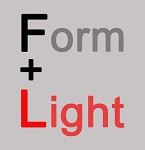LED Glare in Outdoor Application – Some Design Hints
In most outdoor LED light fittings for street and area illumination high power LED’s are used in combination with TIR lenses and/or reflectors. LED’s are bright but small light point sources with very high luminance levels. This has the advantage that you can direct the light very nicely onto the used area and reduce the stray light but this can also create uncomfortable LED glare. This is especially true for fittings which have an extreme bat-wing light distribution characteristic to cover a wider area in outdoor applications.
Here are some hints and considerations to mitigate any LED glare effects for exterior lighting:
- Pedestrians are more likely to complain about LED glare than drivers because pedestrians glance around more than drivers as they walk. Pedestrians are effected from all beam angles 0-75° from the luminaires nadir, whereas driver are more likely effected in the glare zone 75-90° from the luminaires nadir.
- Low pole/fitting heights in residential street or park applications are the most critical in regards to glare, especially when the surrounding area is poorly lit.
- Use LED with colour temperatures as low as acceptable because lower colour temperature light sources are perceived as less glary.
- If possible use fittings with mirrors or better multi-facetted mirrors in order to reduce the luminance (secondary optics). This is an example from HESS with secondary optics: http://www.hess.eu/en/Produkte/Produkte_Leuchten/Lichtpunktzerlegung/ available with LED’s.
 If that is not possible use fittings with diffusers, e. g. with frosted refractors to reduce LED glare. The trade-off is the increased uncontrolled stray light which can be useful – see below.
If that is not possible use fittings with diffusers, e. g. with frosted refractors to reduce LED glare. The trade-off is the increased uncontrolled stray light which can be useful – see below.
- Fittings which have a smooth transition from high to low luminance are perceived less glary. These fittings have less sharp angular luminance variation which allows the eye to adapt easier.
- At reduced glare levels the necessary illumination levels can be lowered because the eye can adapt to the lower luminance levels. The way the eye adapts to a given light level is based on the average illuminance level in the field of vision.
- A related issue of LED’s in outdoor lighting is that despite a lighting design will satisfy the standards the outcome is not the best for pedestrians. Because light fittings with LED’s can be so directional the outcome could be that the roadway and pathways are perfectly illuminated but because of missing stray light the adjacent areas are totally in the darkness. This can have a negative impact on the safety and perception of the area. Only carefully choice of the fittings and appropriate design can overcome this.
LED’s used with precession optics which can create a very directional light source increase the overall efficiency but the trade off is sometimes the possibility of glare – if not designed properly in accordance to the application.
By Dr. Walter Wendel





